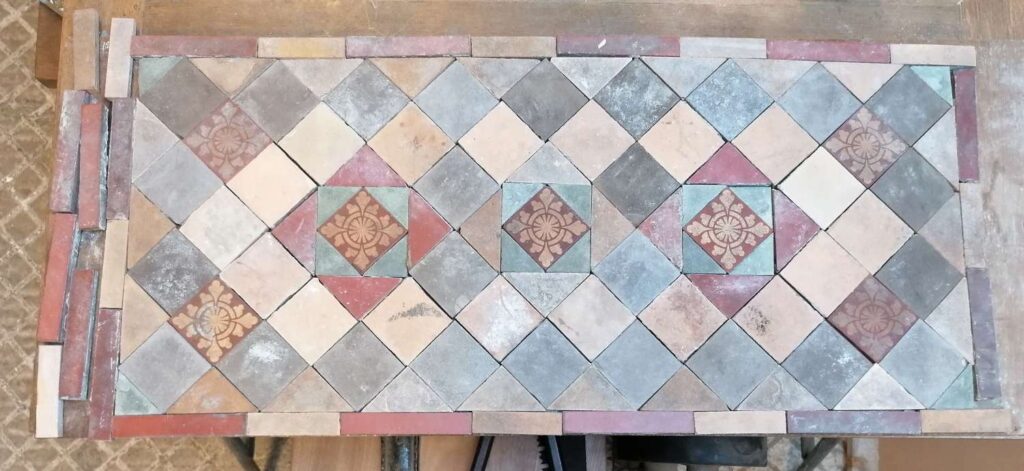
Reclaimed materials are gaining traction in home improvement projects due to their unique aesthetic, environmental benefits, and historical significance. One such material that stands out is reclaimed tiles.
Overview of Roof Tile Costs
The cost of roof tiles can vary significantly depending on the material and brand. New concrete and clay tiles are popular choices due to their durability and variety of styles.
Generally, concrete tiles are more affordable than clay, with prices influenced by factors such as color, finish, and brand. For example, premium brands often command higher prices due to perceived quality and design features.
In comparison, reclaimed tiles can vary widely in price, often depending on their condition, rarity, and historical value. These often come from old buildings, giving them unique characteristics that can be more appealing to certain consumers.
When considering cost-effectiveness, it’s essential to evaluate not just the purchase price but also the long-term value and aesthetic contributions these tiles bring to a project.
What are the Advantages?

Reclaimed tiles bring several compelling benefits to building and renovation projects, combining aesthetics, environmental sustainability, and cultural preservation in a way that new materials often cannot match. Here are the detailed advantages:
Distinctive Aesthetic Appeal
The aesthetic of reclaimed is one of their most significant advantages. These come from a variety of historical periods and styles, offering patinas and textures that modern manufacturing processes simply cannot replicate.
This distinctive appeal can enhance the design of both traditional and contemporary spaces, making reclaimed tiles a popular choice for architects and interior designers seeking to create visually striking environments.
Durability Comparable
Despite their age, reclaimed tiles often match or even exceed the durability of new tiles. Made from high-quality materials and crafted to stand the test of time, these have already proven their resilience by surviving the elements for decades, or even centuries.
This longevity not only makes them a practical choice for roofing and flooring but also offers a sense of continuity and timelessness to the structures they adorn.
Environmental Benefits

Using reclaimed tiles plays a crucial role in reducing the environmental impact of building materials. By repurposing existing ones, the need for new raw materials and the energy consumption associated with manufacturing, transporting, and processing new goods are significantly decreased.
This contributes to a reduction in the overall carbon footprint of a building project. Moreover, keeping these materials out of landfills helps minimize waste and promotes a more sustainable construction industry.
Cost Analysis
A detailed cost analysis between new and reclaimed materials shows varied results. Initially, reclaimed tiles may appear more expensive due to the labor involved in their retrieval and preparation for reuse.
However, the long-term savings can be substantial. Reclaimed tiles typically require less energy to process compared to manufacturing new ones, leading to lower overall environmental costs.
Moreover, the durability of reclaimed tiles means they can last as long as new ones without needing replacement. It’s important to consider potential hidden costs, such as the need for specialized installation or restoration, which can offset initial savings.
A thorough understanding of both upfront and ongoing expenses is crucial for making an informed decision.
Market Trends and Consumer Preferences

The market is influenced by trends in both sustainability and vintage style preferences.
As consumers become more environmentally conscious, the demand for sustainable building materials like reclaimed tiles increases.
This trend is supported by a revival in vintage and rustic home aesthetics, where the unique characteristics of reclaimed materials are highly prized. However, the availability of reclaimed tiles can be unpredictable, which affects pricing and accessibility.
Understanding these market dynamics is essential for consumers considering reclaimed tiles, as they can impact both the cost-effectiveness and feasibility of sourcing these materials for large-scale projects.
What are the Challenges?
Reclaimed tiles offer a plethora of benefits, but they also present unique challenges that must be carefully considered by potential buyers, especially when planning large-scale projects or precise restorations. Here are the main issues that can arise:
Limited Availability
One of the primary challenges with reclaimed tiles is their limited availability.
Unlike new materials that can be manufactured in large quantities and with consistent standards, reclaimed tiles come from existing structures and are therefore available only in finite amounts.
The scarcity can make it difficult for large projects to secure enough that match in color, size, and texture, potentially leading to delays or the need to compromise on design visions.
Consistency and Quality Variability

Reclaimed tiles can vary widely in terms of quality and appearance, even within the same batch.
Factors such as their age, the conditions from which they were reclaimed, and the extent of their previous use can all impact their condition.
This inconsistency can pose significant challenges for builders and architects who need uniformity in their projects. The additional effort required to sort and select tiles that match can also add to project costs and timelines.
Additional Restoration and Preparation Costs
Another challenge is the potential need for additional restoration or preparation before reclaimed tiles can be reused. While some might only need cleaning, others may require extensive repairs or treatments to restore their functionality and aesthetics.
These processes involve extra labor and resources, potentially making reclaimed tiles less cost-effective upfront compared to new materials.
Regulatory and Compliance Issues
Using reclaimed materials can also involve navigating regulatory and compliance issues, especially in regions with strict building codes and standards.
Ensuring that reclaimed tiles meet these requirements for structural integrity and safety can require additional testing and certification, further adding to the project’s complexity and cost.
Environmental Considerations
Although they are praised for their environmental benefits, the process of reclaiming, transporting, and processing these materials can sometimes negate these advantages.
The energy used in these processes and the potential for increased carbon emissions during transportation, especially if they are sourced from distant locations, are factors that need consideration.
Summary
Reclaimed tiles present a compelling option for those looking to combine aesthetic appeal with environmental consciousness in their building projects.
While they can offer cost savings and add unique value, the decision to use reclaimed versus new tiles involves considering a variety of factors including costs, benefits, market trends, and potential challenges.








